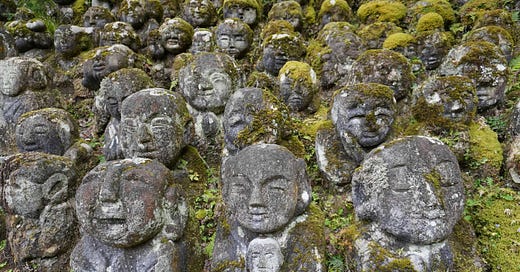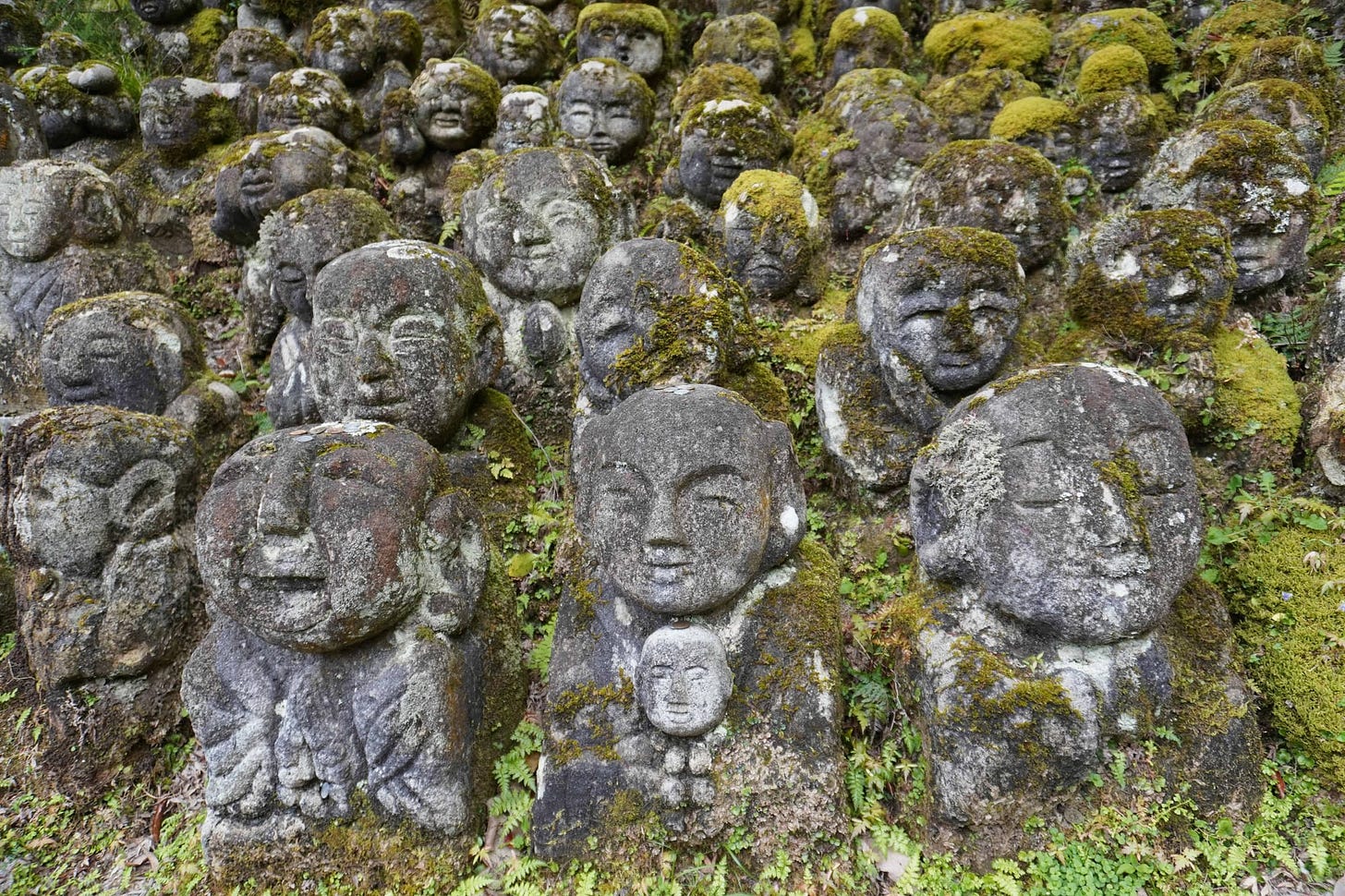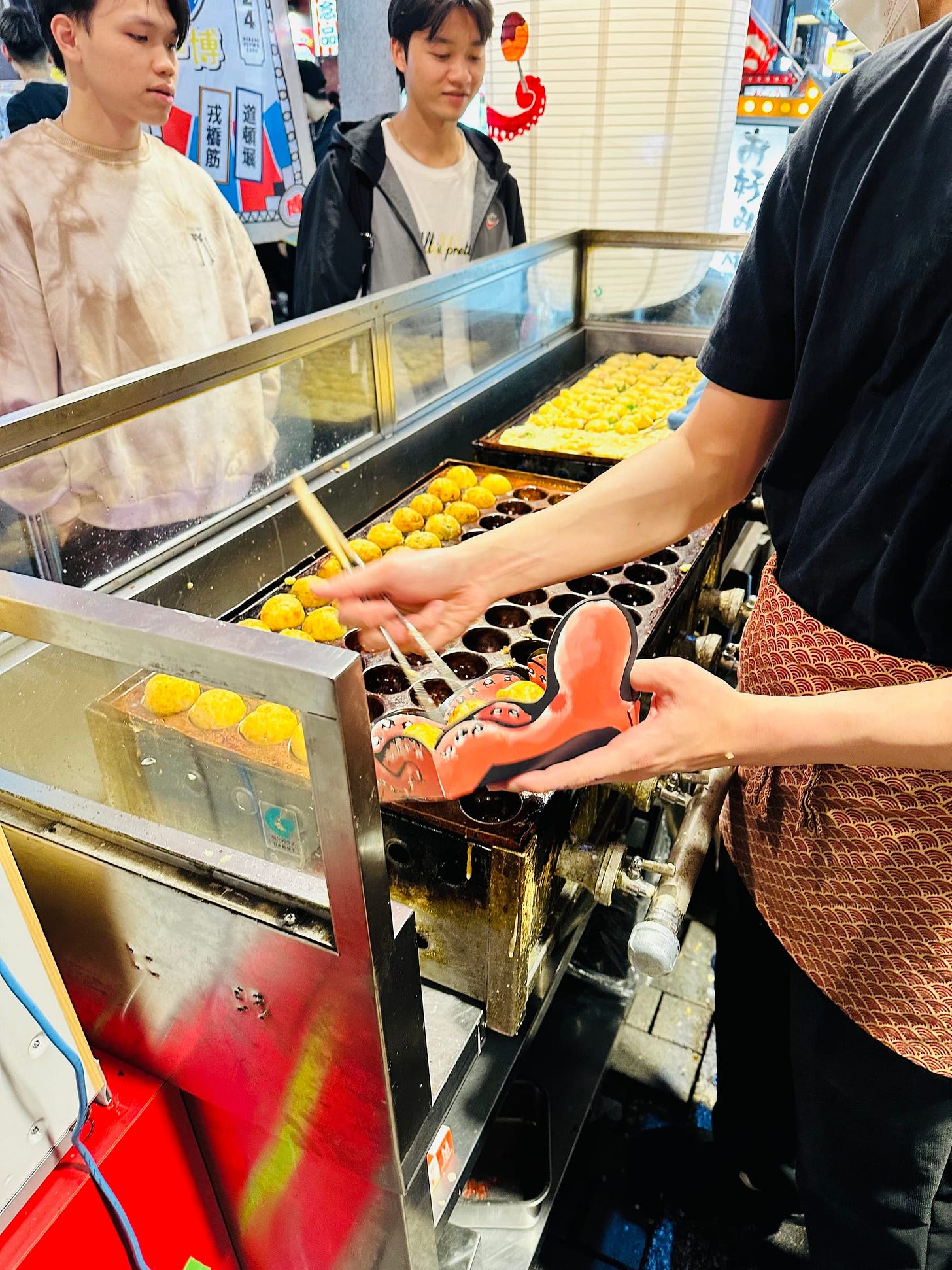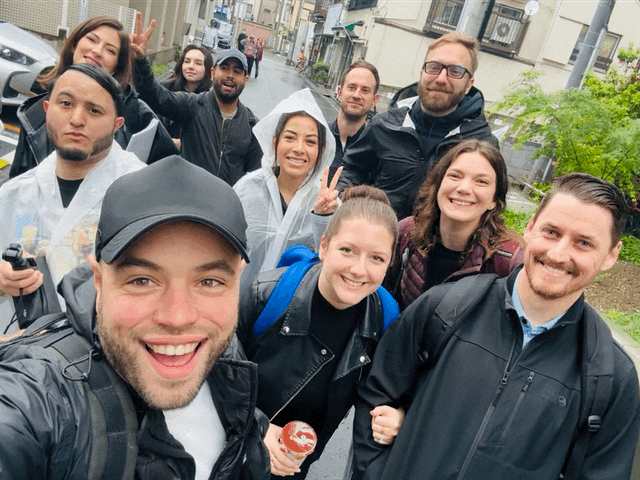Musings from Japan
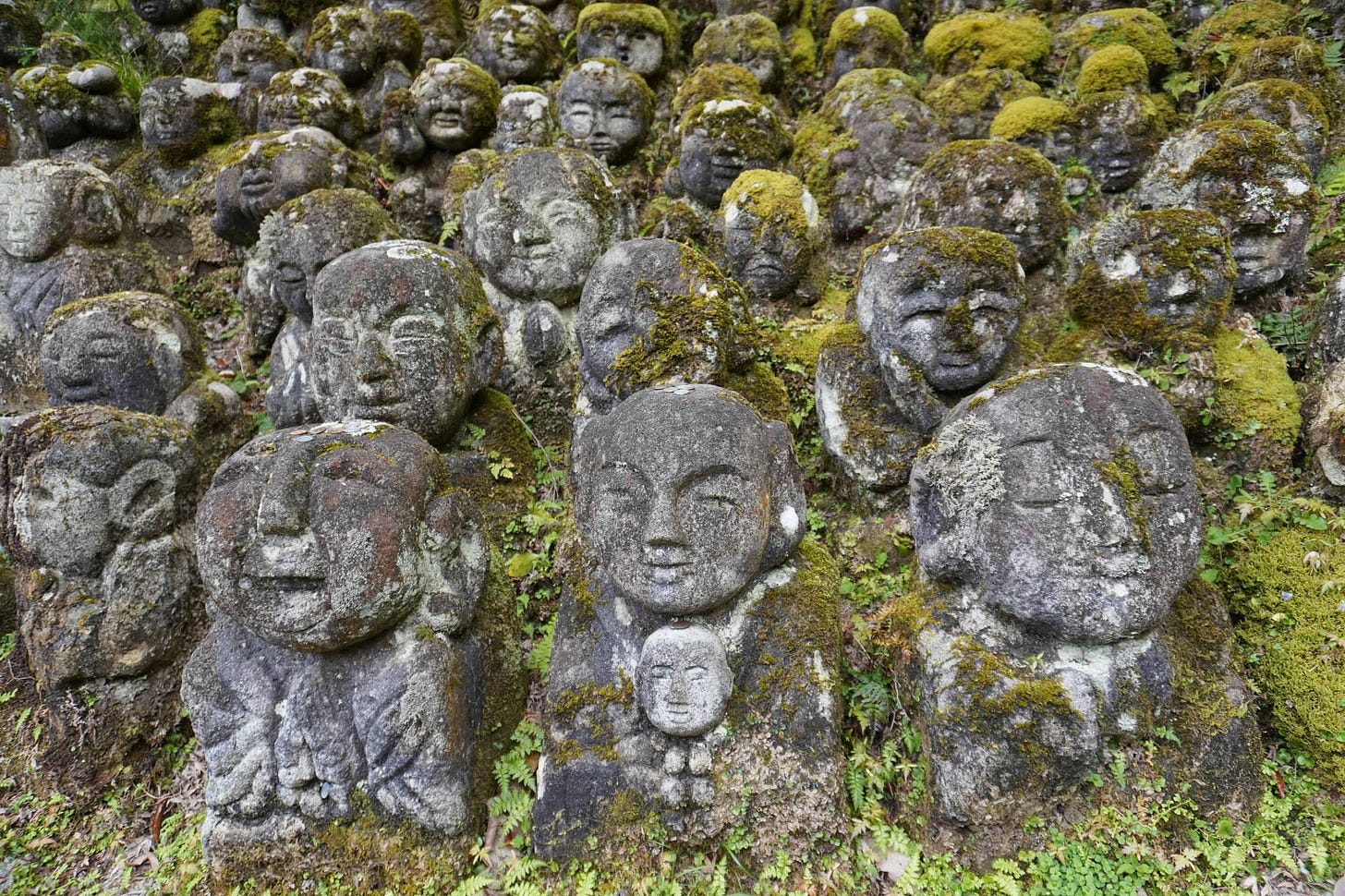
Note: if this email truncates, see my site for the full version.
My circadian rhythms are bobbing up and down in the waters somewhere in the Pacific Ocean around the International Date Line. Deep in the throes of recalibrating my sleep cycle from my recent trip to Japan, I wanted to share some delirious musings.
First off, why Japan? A curiosity in the country first started when I was an undergrad with a quip from Roland Barthes in his Empire of Signs. Ok, you caught me. I didn’t actually read the book. I did better than that: a professor read it and explained it to me. Productivity hack or laziness? Regardless, the quip stuck with me. In the early 80’s, Barthes claimed that Japan was so interesting because it’s a highly developed nation that was remarkably independent from Western influence. It was as though society was forked and Japan was on it’s own adventure while the West put a McDonald’s on every street corner. This might not be totally accurate especially considering the effects of WWII on Japanese society, but this idea, along with a lifelong fascination with Zen Buddhism, spurred an early interest in the country.
So here are some musings from my trip in no particular order and with no claims to the factual accuracy of all of the broad strokes I make here. As this was only two weeks and my first time in the country, clearly my expertise here knows no bounds.
Shinto and Buddhism
The two main religions in Japan are Shinto and Buddhism. Shinto is the native, indigenous religion. Buddhism, by contrast, was introduced to Japan in the 6th century from China, India, and Korea. What’s the difference between the two? One of our guides had a great distinction: Shinto is how you deal with this life and Buddhism is about the next life.
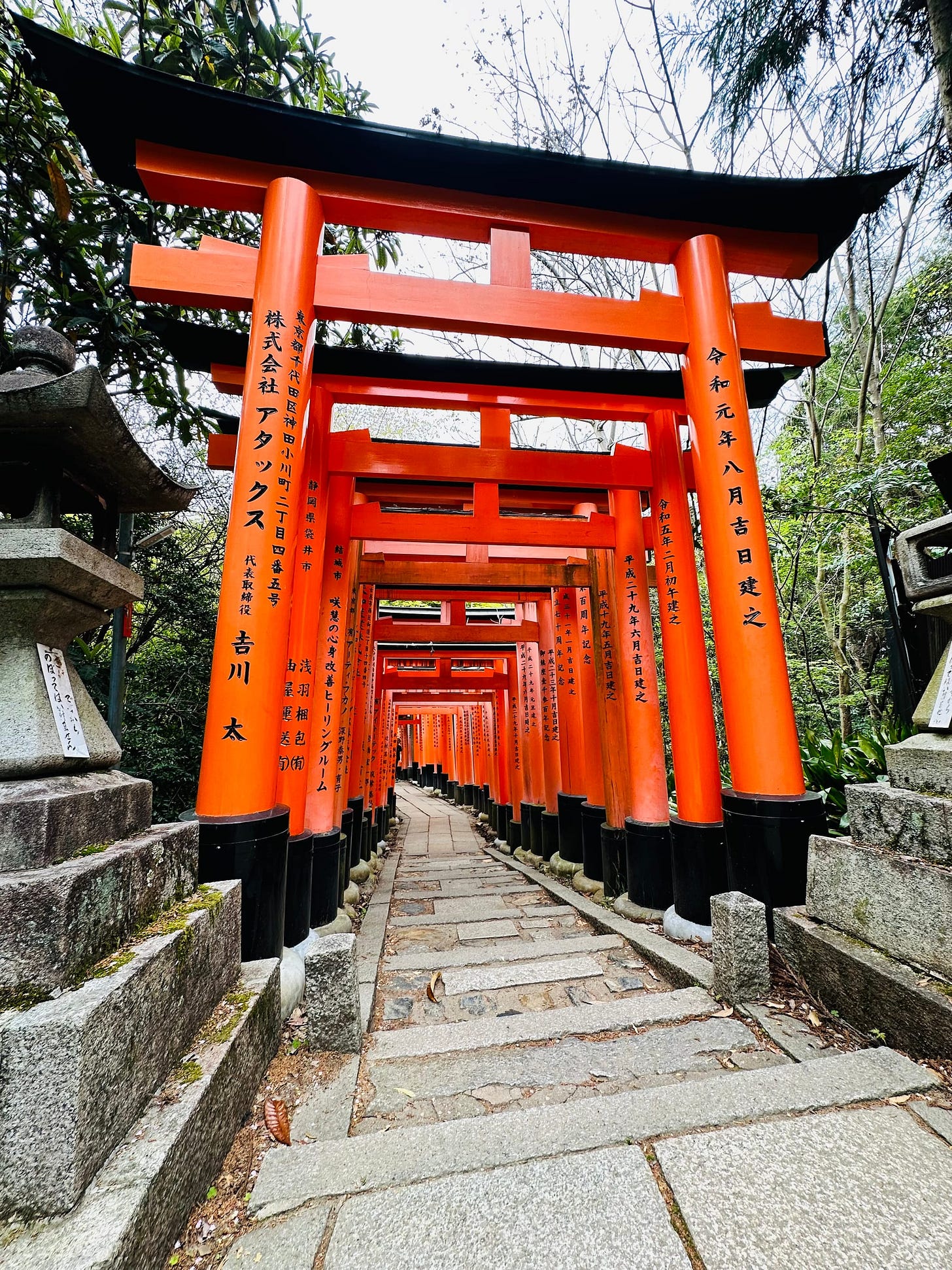
Shinto shrines can be found throughout the country and deal with day-to-day rituals including how to have business success, become more beautiful (it didn’t work for me), and how to support your favorite sports team (yes, there’s a shrine to this complete with Lakers jerseys outside our guide’s apartment). There’s no central Shinto doctrine but rather a series of rituals focused on the spirits that inhabit all things. This is one of the best examples of animism, or this belief in spirits. And while Japan has a prime minister, it also has a hereditary emperor who has a pope-like function as the head of the religion.
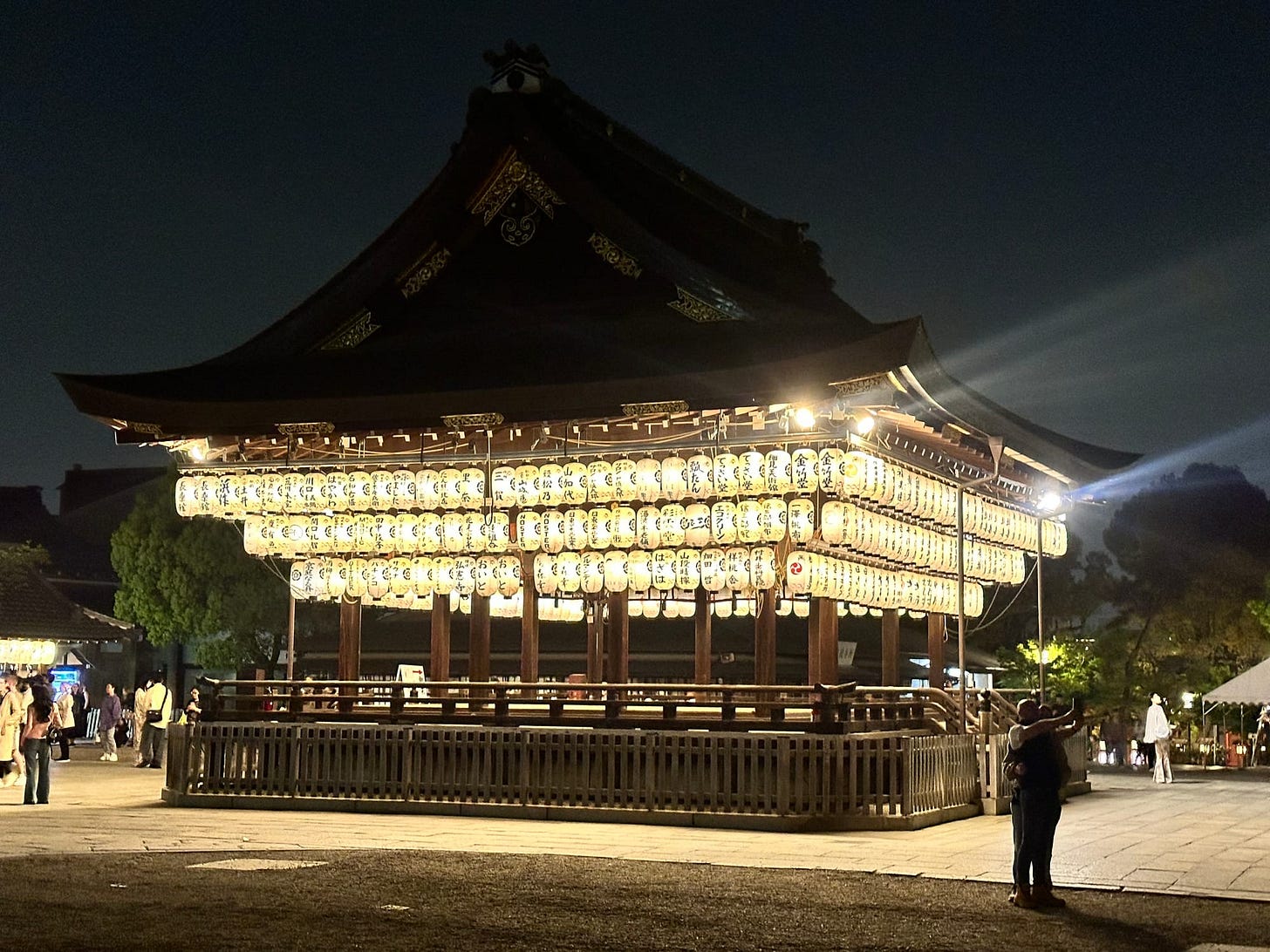
Buddhism deals more with the bigger picture, especially regarding death. While there are many sects of Japanese Buddhism, I always found myself most attracted to Zen for its focus on meditation, direct experience over teachings, minimal aesthetics, and its riddles known as “koans” like “what did your face look like before your mother was born?” There are a number of fascinating Buddhist practices here such as mummification where a monk targets a specific diet that will allow them to die while meditating, preserving their body indefinitely. These make for pilgrimage destinations among practitioners. Another favorite is the 1,000 day challenge where monks run from 30 km up to 84 km daily in 100 consecutive day bouts split up over 7 years, all on the path to enlightenment.
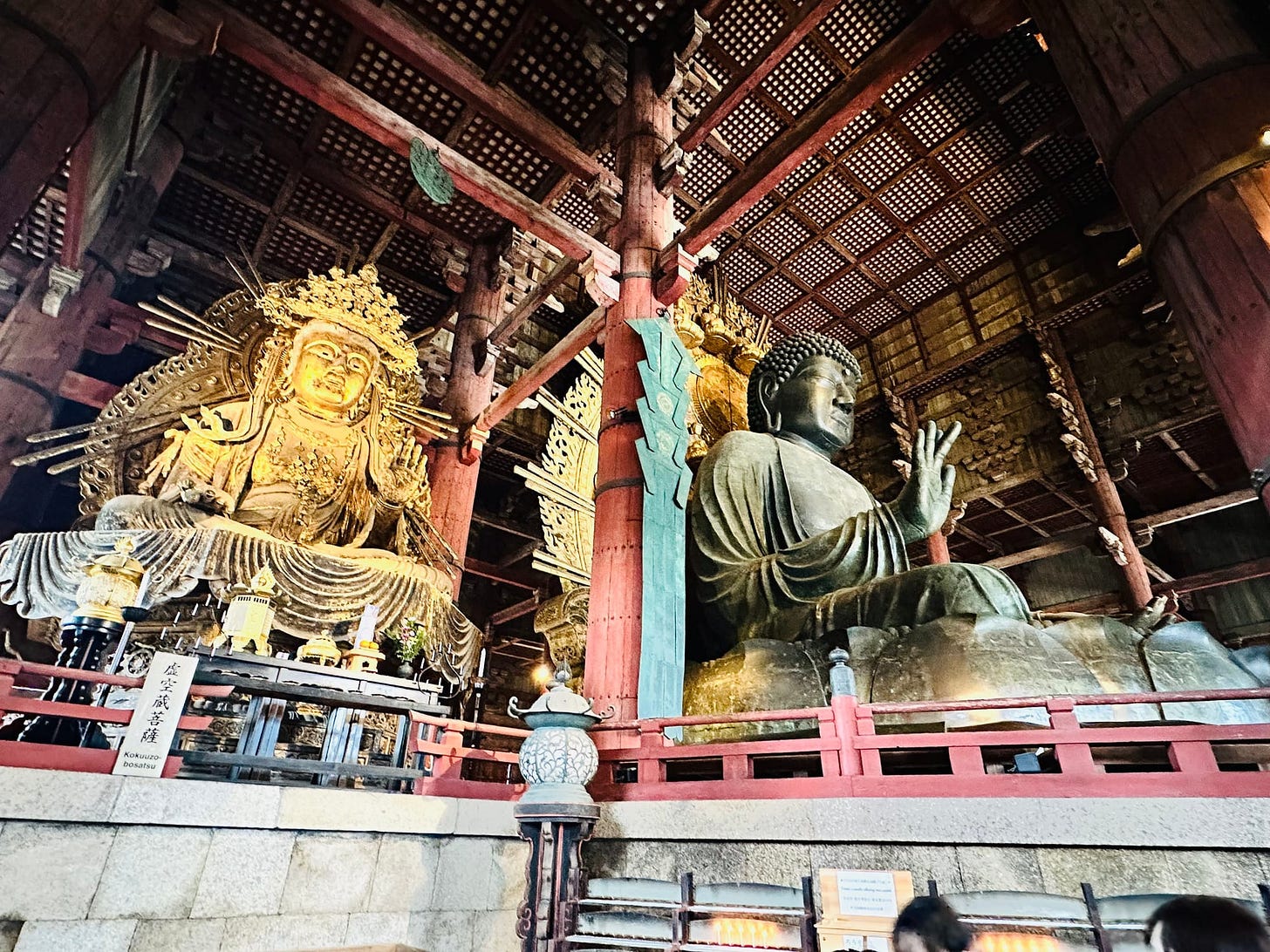
The Economy—and who cares?
The Japanese economy has been stagnant for decades beginning in the 1990’s. In the past ten years, there’s been an average growth of .6% or about a third of that seen in most other developed economies. There are a number of reasons for this including an aging population, inflation, and a weak currency. But the most striking part of the Japanese economy is how big its middle class is. Some numbers claim 90-95% of the country is middle class while others say this has declined in recent years. Compare this to the US and China at 50% and to South Korea at 60%.
It makes one wonder how much the high standard of living affects the business culture. Japanese companies known the world over for high end manufacturing and technology are generally more focused on stability than growth. So why care about growing your economy when most of your citizens have such a good quality of life? This is very different from the growth-at-all-costs model of venture capital-backed American startups.
One additional note here is how pervasive fashion is in Tokyo in particular. The streets are lined with familiar brands. Well, familiar to most people. Less familiar to me whose greatest excitement in fashion is finding a functional piece of clothing that I can purchase a two week supply of. Hey, Obama and Steve Jobs did it to lower the cognitive load of getting dressed, alright? Anyways, given the cost of purchasing homes and vehicles in the country, this bolsters the interest in fashion where much of the population funnels disposable income towards fancy clothes like Balenciaga combat boots instead.
Kyoto
Kyoto first came on my radar from etherial music masterpieces named after the city from artists like Air and Makoto San. And I’d be remiss if I didn’t mention the Skrillex banger by the name Kyoto too which seems as out of place in Kyoto as a clan of meerkats in a Manhattan executive board room.
This city really got me thinking about the difference between traditional and authoritarian cultures. Singapore, for instance, is quite authoritarian with its ubiquitous security cameras, pervasive use of caning as punishment, and fines for everything from not flushing the toilet or playing music in public ($750) to importing chewing gum or connecting to somebody else’s wifi ($7,500 fine or up to 2-3 years in prison). Authoritarian cultures are top down. Kyoto and the rest of Japan are very traditional (or bottom up). A lot of this culture has its roots in the old Samurai class with its strong ethical code of Bushido (or the honorable way of the warrior). This was similar to the Indian caste system where the Samuai were the highest class followed by peasants, artisans, and then, interestingly enough, merchants. You can feel the tradition throughout your interactions with the bowing, cleanliness, offerings at temples, and many levels of politeness in the language. Forget to take your shoes off or don’t use a basket when shopping leads to an instant reminder.
Kyoto was the capital of Japan for over a thousand years and is now considered to be the cultural capital. Nara (outside of the southern city of Osaka) was the former capital but this was moved in part due to the perception that the Buddhists were meddling in politics (a silly image, no doubt). So the Buddhist temples were banned from central Kyoto, relegating the 1,600 temples—yes, I said 1,600—to the hills around the city.
The Yakuza
I know what you’re thinking: “yeah yeah yeah, will this guy shut up and talk about one of the world’s most notorious mafias already?” Here goes nothing. At it’s height, the Yakuza had close to 200k members. It’s now down to an estimated 25k. In recent years, it’s said that they’ve gotten into more legitimate businesses (especially in entertainment). Japanese Onsens (their public baths) ban tattoos in large part for their association to the mafia, though also because tattoos are seen as unclean. There are gossip columns written about the Yakuza and they put mafia propaganda in adult magazines to attract new members. They also serve a protective function when they run out foreign mafias if they try to establish themselves in Japan. They have offices with well-known locations.
Population Decline
The “total fertility rate” is the average number of children born to a woman over her lifetime. To sustain a population, you need a rate of 2.1. The global fertility rate is currently 2.3 meaning the global human population is expanding, however this is incredibly unbalanced with the highest rates in Africa and much lower rates throughout the rest of the world. Japan is notorious for having a low replacement rate at 1.4. However, I didn’t realize that South Korea is actually much worse at a .7. This means that each generation South Korea’s population will decrease by two thirds (unless they cook the books by increasing immigration). Japan’s population will decrease by a third each generation. Why is South Korea so much worse? Well, it’s complicated. But it seems to be partially related to the social pressures that have resulted in many South Korean teens fleeing to other countries like Japan at the earliest opportunity. One interesting barometer of social pressure is plastic surgery rates where an estimated one-fifth to one-third of women in South Korea's capital have undergone the procedure.
Hiroshima
One highlight was a day trip to the Hiroshima Peace Memorial Museum, which had the somber ambiance akin to a holocaust memorial. The bombing of Hiroshima killed approximately 140k people in total including the aftermath. Walking into the museum is two floor-to-ceiling photographs of the city: one taken before the bombing and one taken afterwards. The initial exhibit is focused on artifacts like the clock stopped at the moment of the blast, the stairs with a human silhouette forever imprinted on them, and the clothing of children victims coupled with their stories.
One surprising element of this history was the timeline. The Postdam Conference is where the plans for post-war Europe were discussed with President Truman, Churchill, and Stalin. The first successful test of an atomic bomb was July 16th, 1945. The start of the conference was the following day, so Truman was at the conference when he learned of the first successful test. Truman then quickly ordered the bombing of Hiroshima, which took place just weeks later on August 6th followed by Nagasaki 3 days after that.
Clearly this history is controversial for a number of reasons, one notable reason being that the Americans were concerned that Japan would get too close to the Soviets and would retain a hereditary monarchy after its likely surrender. Part of the controversy surrounding the bombing was whether expediting the already likely Japanese surrender in a way that would better ensure separation from the Soviets and democracy was really worth it. Unlike the strong propagandist messages throughout the war sites in Vietnam I visited back in November, this museum was balanced at representing the real suffering caused by war with the complexities of that political moment all in the service of a message of peace.
There’s now a flame at the site of where the bomb dropped that will burn until atomic weapons are all disassembled.
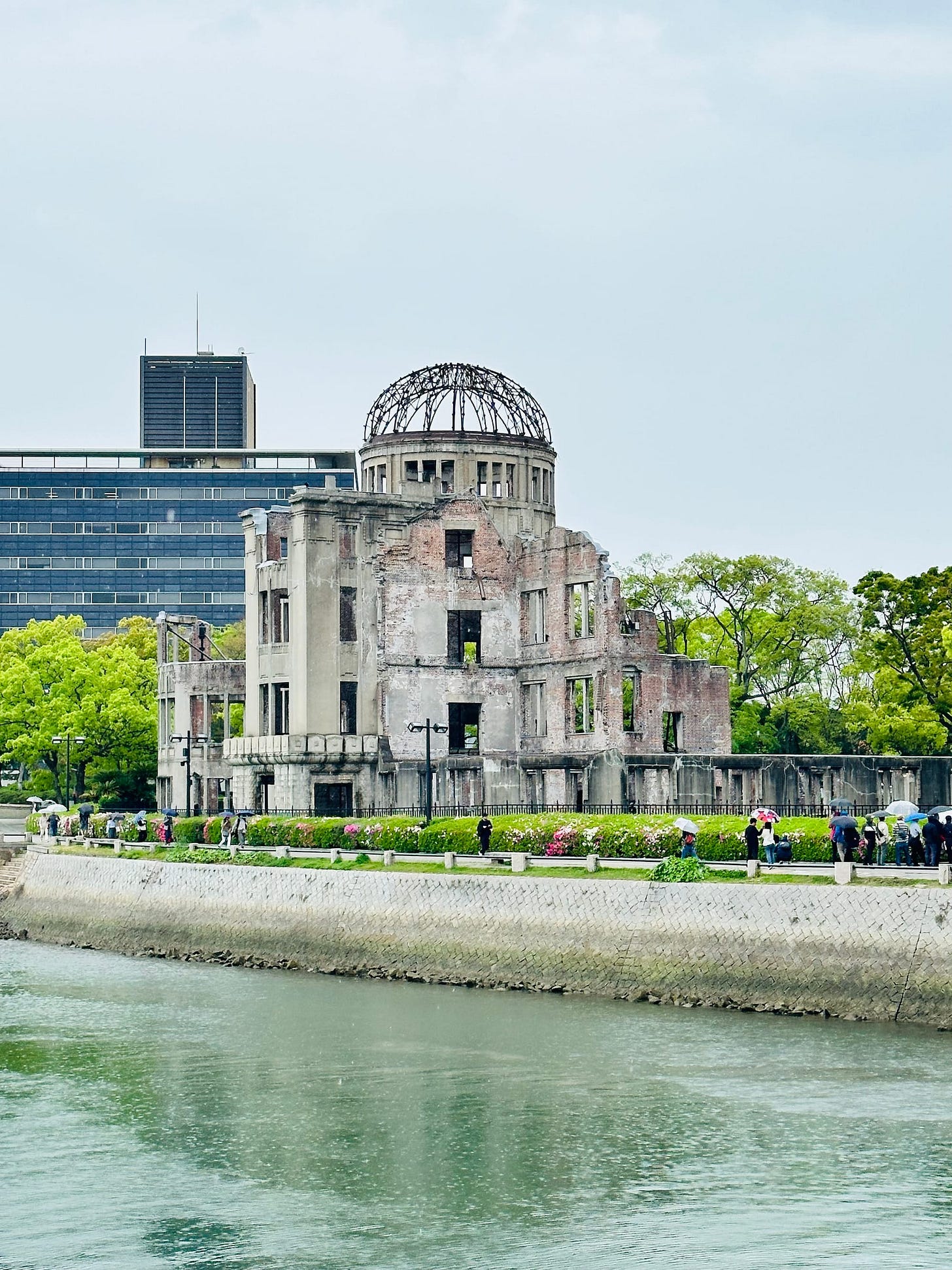
First vs Second Order Fun
This is a helpful frame for traveling. As a friend once said: “Hugs are great. You either get a good hug and it’s legitimately a good hug so you have a good hug. Otherwise, it’s awkward, and I relish the awkward. So it’s still good because you laugh about it being awkward.” This is the difference between first and second order fun. First order fun is what you legitimately enjoy. Second order fun is what you enjoy in retrospect. It’s the “I’m glad I did it” after seeing something weird swimming in your miso soup or scratching your head after trying a fermented something-or-other that just doesn’t translate.
Sumo Wrestling
Sumo is the national sport dating back to 300 BCE. It was originally performed in Shinto shrines to entertain the deities, settle disputes, and ensure a bountiful harvest. It still maintains those religious roots. These clashed with contemporary society recently when women doctors entered the ring when the referee was having a heart attack. The ring is considered the sacred space where the gods dwell. Only the referee and wrestlers are allowed in, and there’s a ring blessing and purification process before it’s used. The women were repeatedly asked to leave while they were attending to the medical needs of the referee. Later the commission apologized for being overly rigid, demonstrating a slight modernization of the tradition.
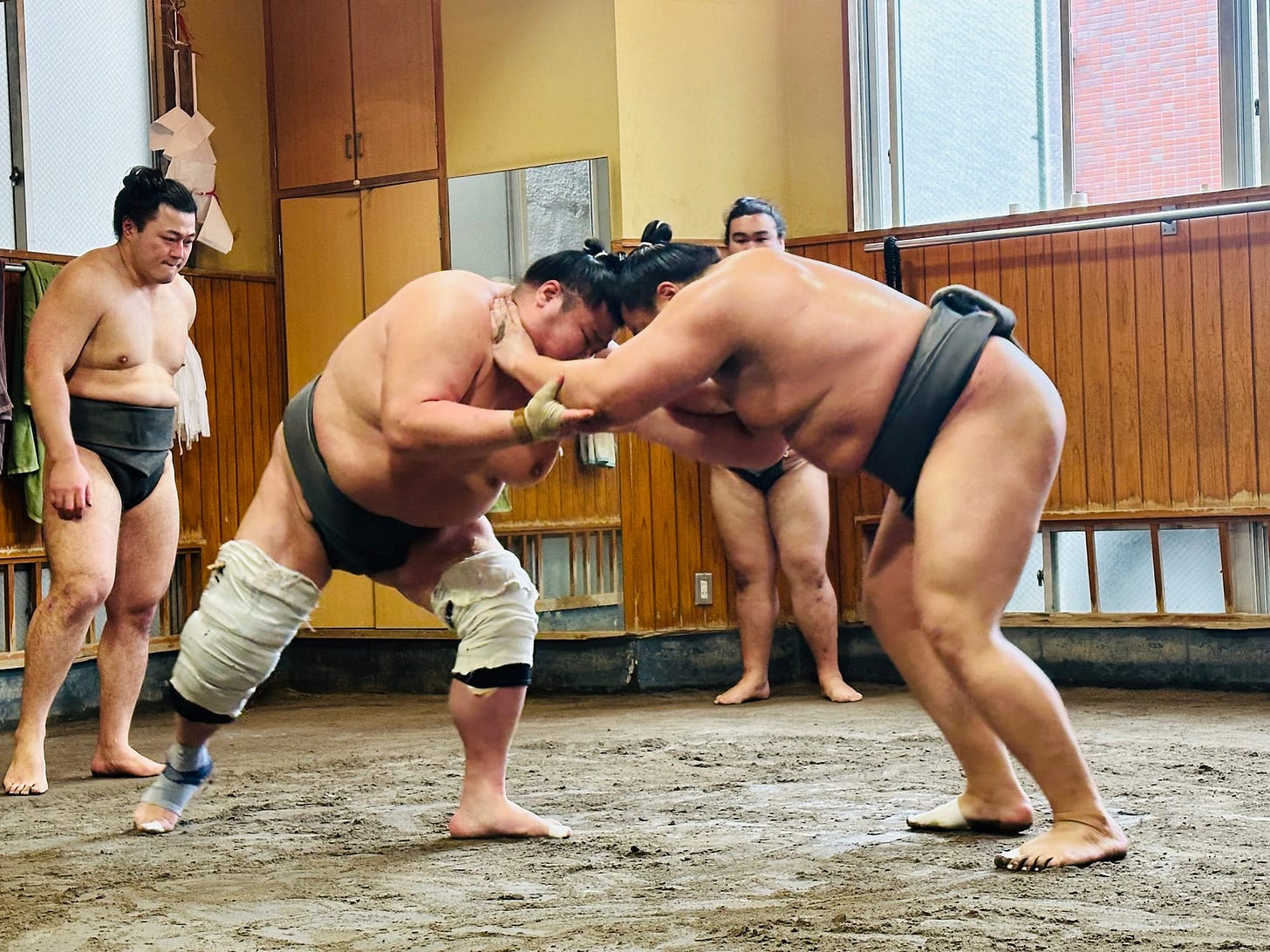
Food
It’s always interesting to ponder the societal effects of nutrition. In China, the food was excellent but also felt like empty carbs, likely due to the lower soil quality and heavier use of chemicals. Japanese food seemed a lot healthier overall with a simplicity to ingredients relative to their neighbor to the West. Here are the most notable meals:
Kobe beef: Waygu means “Japanese cow” and Kobe is a specific strain of Japanese cattle. This spot in Tokyo was one of the best steaks of my life. First order fun.
Tako-yaki: Fried balls of batter with octopus and sauces. My favorite street food. First order fun.
Okonomiyaki: A savory pancake covered with cabbage, noodles, and other goodies. Mostly second order fun…because carbs.
Ramen: A soup-er tasty dish. Get it? I know, I’m about ready for this blog to be done too. Anyways, I prefer udon over ramen with soba (buckwheat) noodles coming in third. Totally first order fun.
Sushi: Duh. We ate sushi at a Michelin star restaurant, multiple conveyor belt sushi restaurants, and many convenient stores. Largely first order fun, but a little second order fun too when our food was still moving.
Tempura: Fried seafood and vegetables. Good but I was trying to take I break from fried foods. More second order fun than first order fun.
Yakitori: Different skewers of meat and veggies. The delight of a keto diet. First order fun, especially for Waygu beef skewers.
Katsu-don: Rice topped with breaded meat. A convenient store go-to for a quick bite. Very good. First order fun for sure.
Matcha: Powdered green tea. Pretty bitter, but great in pastries or iced with a bit of sugar. First order fun.
Curry: Influenced by India, there’s actually quite a bit of curry in Japan though it’s not as spicy as its Indian counterpart. First order fun, especially with fried chicken or an omelette.
Tofu: Totally second order fun. We had traditionally made tofu in a beautiful restaurant situated in a Kyoto Zen garden. Yuck. I’ve eaten paper that’s more flavorful. Given the more extensive use of spices in China, their tofu wins the first order fun prize in my book.
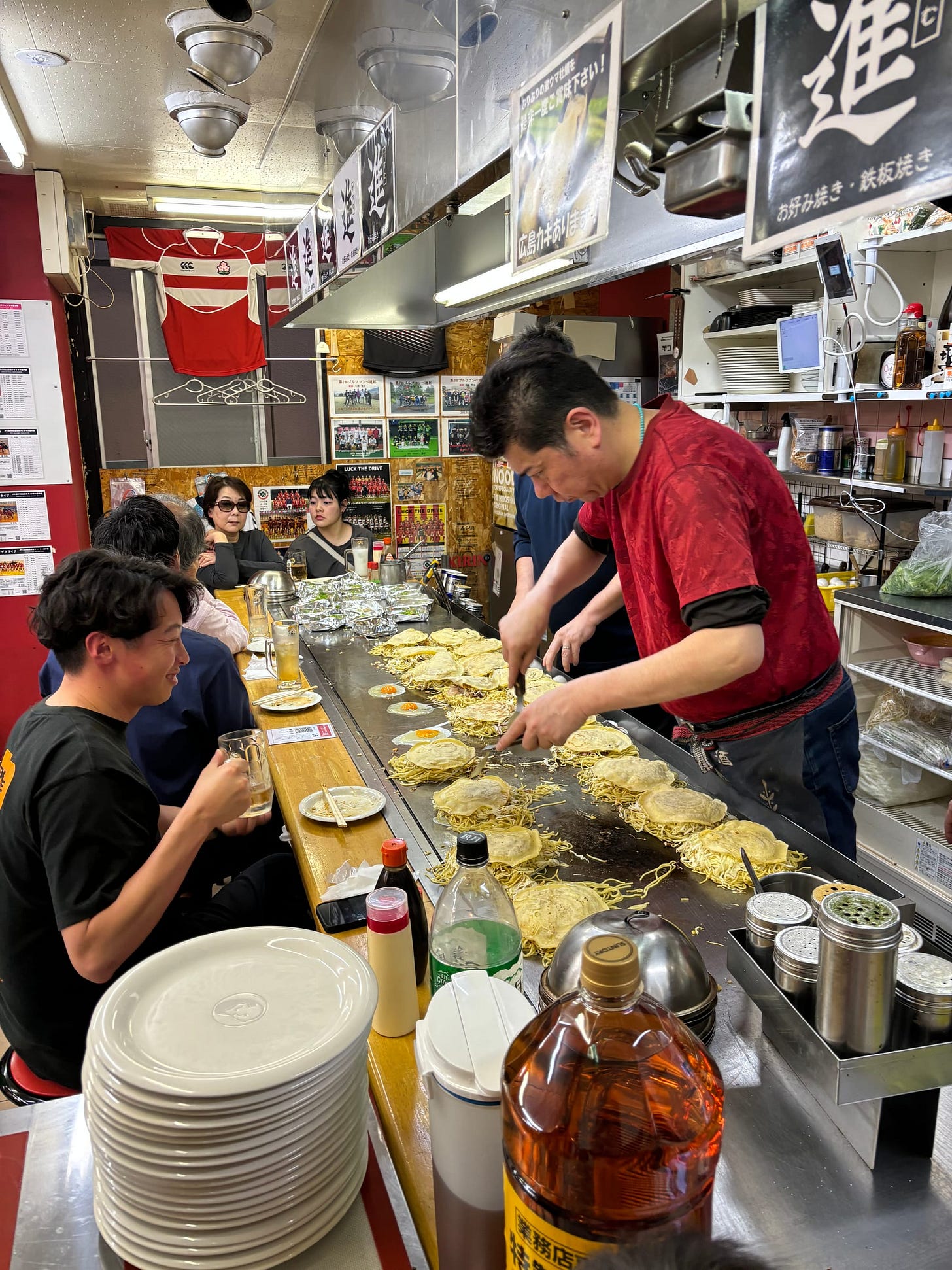
Wrapping Up
Whether Roland Barthes’ observation still applies to Japan is an open question, but at the very least I can see where he’s coming from. It’s up there in the “very very different from America” category for me with some other spots I’ve traveled to, most notably Moldova, China, India, and Morocco. I was really struck by how much Japan exports their culture. It seems wholly self-contained in a way that many other countries that are more prone to import their culture do not. Japan has major contributions to food, music, technology, business, religion, entertainment, and the list goes on… Sure, there’s plenty of foreign influence, but this island of 125 million seems like if the rest of the world disappeared they might not even notice.
In a future trip, I’d love to go back to do the Shikoku Pilgrimage which is like the Camino de Santiago or pilgrimage to Mecca but for Buddhism. At 40-50 days of walking, this pilgrimage visits 88 temples. I’d also love to do a full geisha show. These are the high end, meticulously and classically trained entertainers (not sexual as some assume). While we saw one theater geisha show in Kyoto to honor the spring, it’d be great to see their mastery of traditional dance, music, and conversation in person.
In brief, Japan was one of my favorite places to travel. First order and second order fun abound. And a massive shout-out to Dan and Erica to amassing such a great crew to crash their honeymoon.
